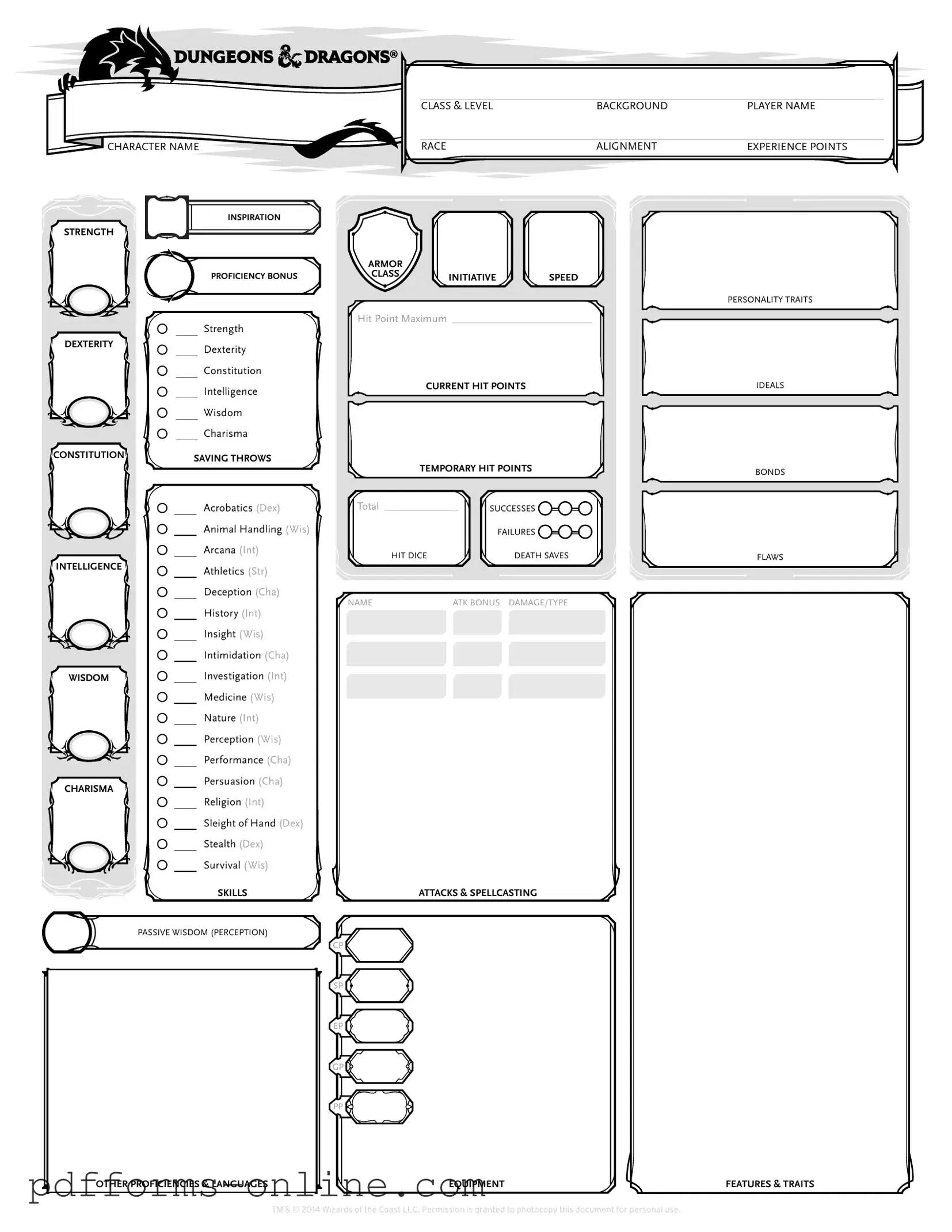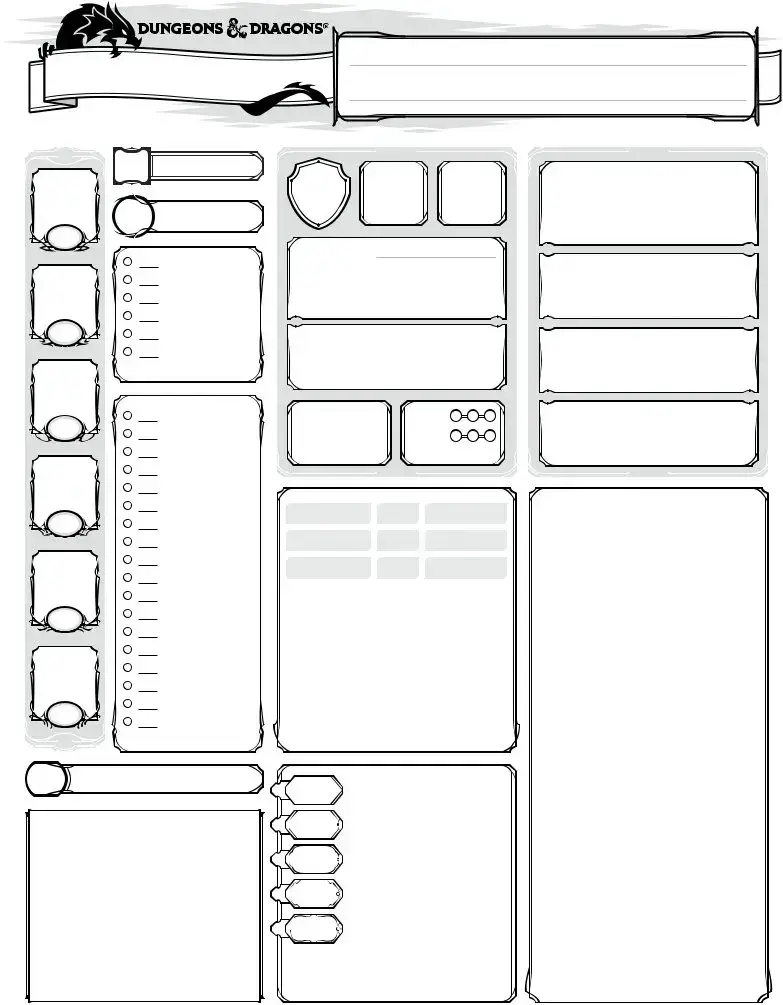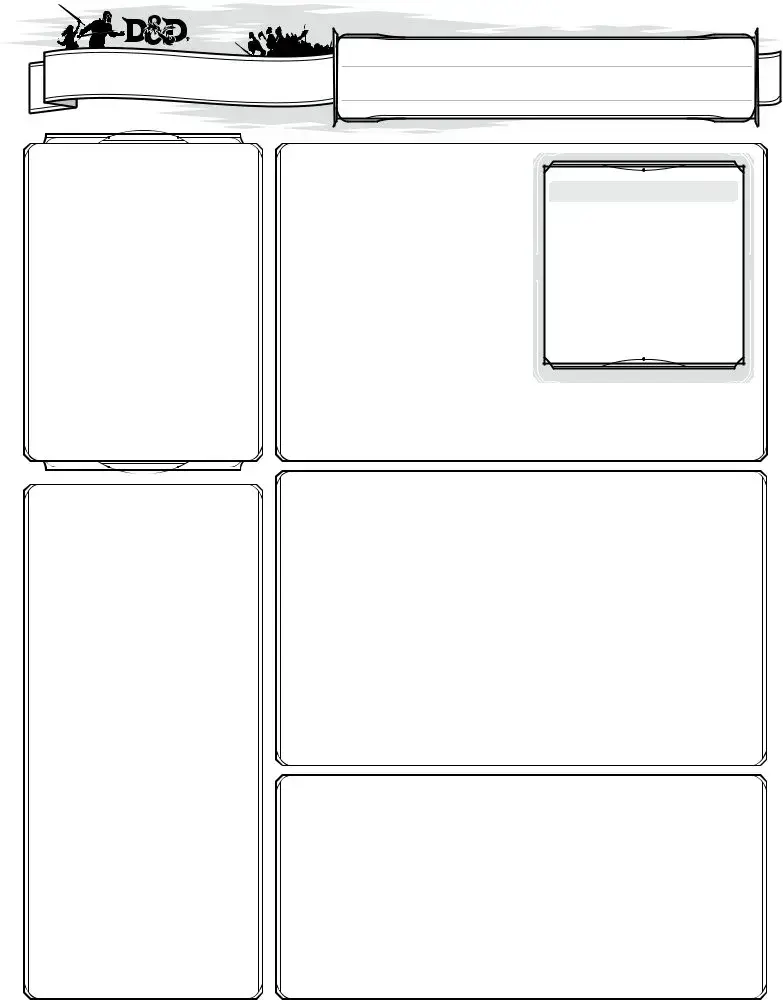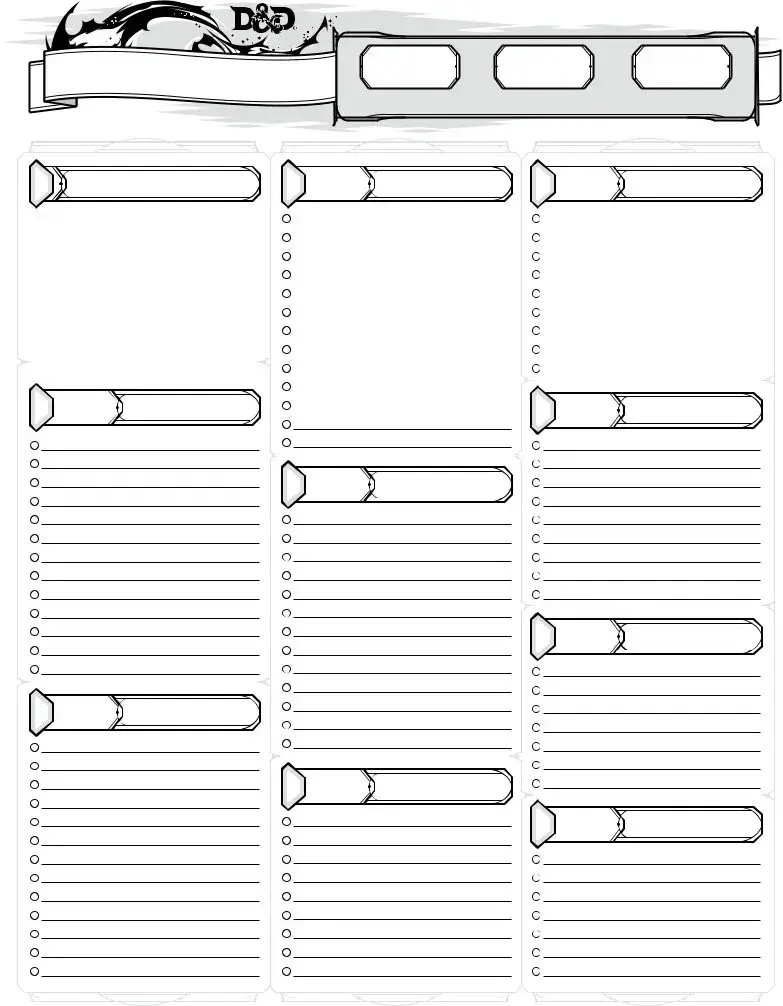Creating a character in Dungeons & Dragons (D&D) is an exciting journey that allows players to immerse themselves in a world of imagination and adventure. Central to this experience is the D&D Character Sheet, a comprehensive document that captures all the essential details about a player's character. This form includes vital information such as the character's name, race, class, and background, which provide the foundation for their identity within the game. Additionally, players must fill out sections detailing their character's abilities, skills, and proficiencies, which influence how they interact with the game world. The sheet also encompasses important stats like hit points and armor class, ensuring that players can keep track of their character’s health and defensive capabilities. Furthermore, the character sheet allows for the inclusion of spells, equipment, and inventory, which are crucial for gameplay. By organizing all these elements in one place, the D&D Character Sheet serves as both a reference tool and a canvas for creativity, enabling players to fully engage with their characters and the adventures that await them.













